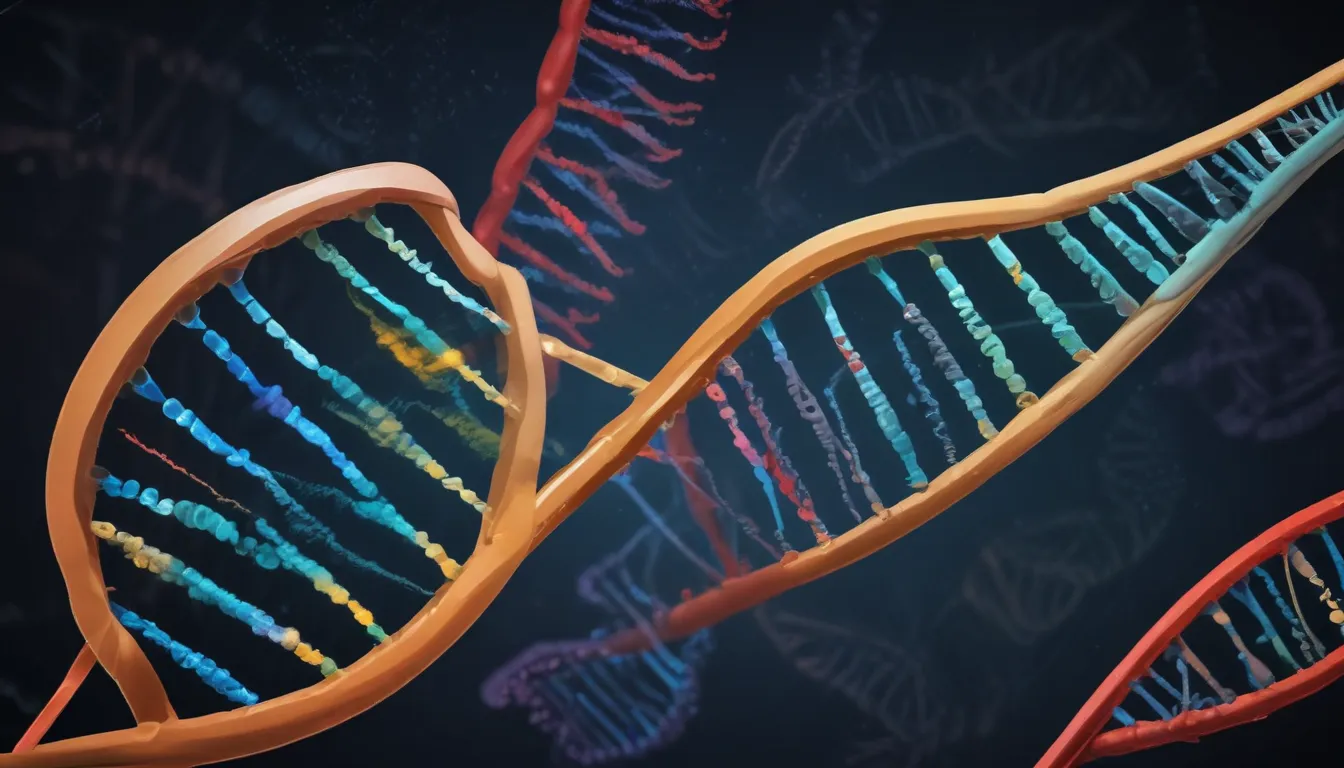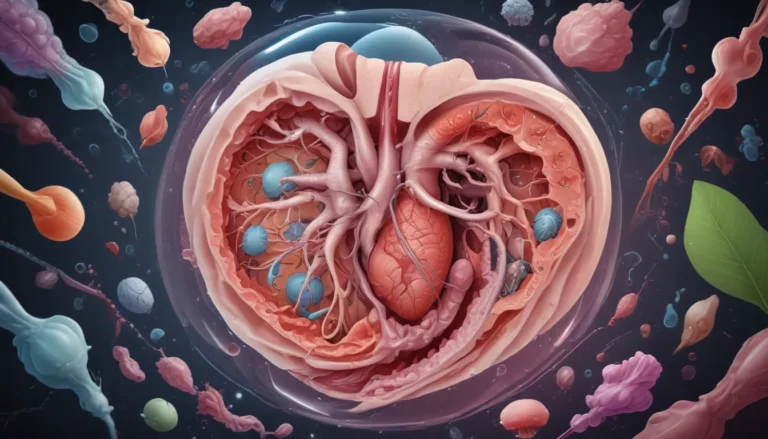A Note About Images: The images used in our articles are for illustration purposes only and may not exactly match the content. They are meant to engage readers, but the text should be relied upon for accurate information.
DNA fingerprinting, a groundbreaking technique also known as DNA profiling or genetic fingerprinting, has revolutionized forensic science and beyond. With the ability to identify individuals through their unique DNA patterns, DNA fingerprinting has become an invaluable tool in criminal investigations, paternity testing, and even the study of ancient human migrations and population genetics.
In this article, we will embark on a journey into the captivating world of DNA fingerprinting and discover 16 surprising facts that showcase its profound impact on various fields. From its inception by Sir Alec Jeffreys in the 1980s to its current applications, DNA fingerprinting has transformed how we unravel mysteries, solve crimes, and establish genetic relationships. So, let’s delve deeper into the awe-inspiring realm of DNA fingerprinting and unearth some unexpected revelations.
Unveiling the Power of DNA Fingerprinting
DNA fingerprinting, also known as DNA profiling or genetic fingerprinting, is a powerful tool utilized in forensic science to identify individuals accurately. This technique involves analyzing specific regions of DNA called short tandem repeats (STRs), which are unique to each person except identical twins. By comparing DNA samples, DNA fingerprinting can determine genetic identities with incredible precision.
Sir Alec Jeffreys pioneered the development of DNA fingerprinting in 1984, opening new horizons for forensic investigations, paternity testing, and identification of human remains. The key component of DNA fingerprinting lies in the analysis of STRs, which are repeating sequences of nucleotides varying in length between individuals. This variability makes STRs ideal for distinguishing between different DNA samples, ensuring high accuracy and reliability in DNA profiling.
DNA fingerprinting boasts an incredibly low error rate, making it one of the most reliable techniques in forensic science. With the probability of a DNA match being in the range of one in billions, DNA fingerprinting has been instrumental in solving criminal cases, exonerating wrongfully convicted individuals, and establishing paternity with remarkable accuracy.
Applications and Impacts of DNA Fingerprinting
DNA fingerprinting has transcended the realm of forensic science, extending its reach to diverse fields and making significant contributions to society. Some remarkable applications and impacts of DNA fingerprinting include:
- Solving Criminal Cases: By comparing DNA samples from crime scenes with DNA profiles in databases, law enforcement can identify suspects and link individuals to crimes.
- Exonerating the Innocent: DNA fingerprinting has played a pivotal role in proving the innocence of individuals wrongfully convicted of crimes.
- Establishing Paternity: Comparing the DNA of a child with that of a potential father can establish a biological relationship with exceptional accuracy.
- Wildlife Conservation: DNA fingerprinting aids in wildlife conservation efforts, allowing scientists to study population genetics, track poaching, and develop conservation strategies.
- Tracing Ancestry: By analyzing genetic markers, DNA fingerprinting can be used to trace ancestry and unravel familial connections.
- Identifying Historical Figures: DNA fingerprinting has been employed to settle historical mysteries by identifying individuals from relics.
The Process of DNA Fingerprinting
The process of DNA fingerprinting involves several crucial steps that are essential in generating accurate results. These steps include:
- Sample Collection: DNA samples are collected from individuals or crime scenes through various methods.
- DNA Extraction: The DNA is extracted from the collected samples, isolating the genetic material for analysis.
- Amplification of STRs: Specific regions of DNA, such as short tandem repeats (STRs), are selectively amplified to enhance their detection.
- Separation of DNA Fragments: The amplified DNA fragments are separated based on their size using techniques like gel electrophoresis.
- Analysis and Comparison: The DNA profiles obtained are analyzed and compared to determine genetic relationships and identities.
The meticulous execution of each step ensures the accuracy and reliability of DNA fingerprinting results, making it a fundamental tool in forensic investigations and genetic analyses.
Evolution and Future of DNA Fingerprinting
DNA fingerprinting continues to evolve with advancements in technology, paving the way for new possibilities and applications. Techniques like Next-Generation Sequencing have enhanced the capabilities of DNA fingerprinting, making it an even more powerful tool for forensic investigations and genetic analyses.
As technology progresses, we can anticipate further advancements in DNA fingerprinting that will provide deeper insights into genetic relationships, ancestry, and human genetics. The evolution of DNA fingerprinting underscores its significance as a transformative tool in the realm of biology and forensic science, shaping the future of genetic research and discovery.
In conclusion, DNA fingerprinting stands as a remarkable testament to human ingenuity and scientific innovation. Its profound impact on various fields, from solving crimes to tracing ancestry and unraveling historical mysteries, highlights the versatility and power of this technique. By understanding the fundamental principles and extraordinary facts behind DNA fingerprinting, we gain a deeper appreciation for the intricate complexities of our genetic code and the uniqueness of each individual.
FAQs: Unveiling Insights Into DNA Fingerprinting
- What is DNA fingerprinting?
-
DNA fingerprinting involves identifying and analyzing unique patterns in an individual’s DNA to determine their genetic identity.
-
How is DNA fingerprinting used in forensic science?
-
In forensic science, DNA fingerprinting is pivotal in linking suspects to crime scenes, solving cold cases, and exonerating the wrongfully accused.
-
Can DNA fingerprinting determine paternity?
-
Yes, DNA fingerprinting can establish paternity with a high degree of accuracy by comparing DNA profiles of the alleged father, child, and mother.
-
Is DNA fingerprinting used in immigration cases?
-
DNA fingerprinting is utilized in immigration cases to verify family relationships and provide evidence of biological connections.
-
Can DNA fingerprinting be used to trace ancestry?
-
Yes, DNA fingerprinting can trace ancestry by analyzing genetic markers and comparing them to databases of regional genetic variations.
-
How long does it take to obtain DNA fingerprinting results?
-
The time to obtain DNA fingerprinting results varies based on the complexity of the case, ranging from a few days to several weeks.
-
Is DNA fingerprinting foolproof?
-
While highly accurate, DNA fingerprinting is not entirely foolproof and errors can arise due to contamination or human error during sample collection or analysis.
-
Can DNA fingerprinting be used on degraded samples?
-
Advancements in DNA analysis techniques enable reliable results even from degraded or low-quality DNA samples.
-
Are there privacy concerns with DNA fingerprinting?
-
Privacy concerns may arise due to the sensitivity of genetic information, emphasizing the importance of proper consent and secure storage of DNA data.
-
Can DNA fingerprinting identify genetic disorders?
- DNA fingerprinting aids in identifying genetic disorders by analyzing specific genetic markers associated with certain conditions.
By exploring the captivating world of DNA fingerprinting and unraveling its fascinating facts, we embark on a journey of discovery and appreciation for the marvels of genetics and forensic science. The intricate complexities and applications of DNA fingerprinting continue to astonish and inspire, showcasing the remarkable capabilities of human innovation and scientific progress.






